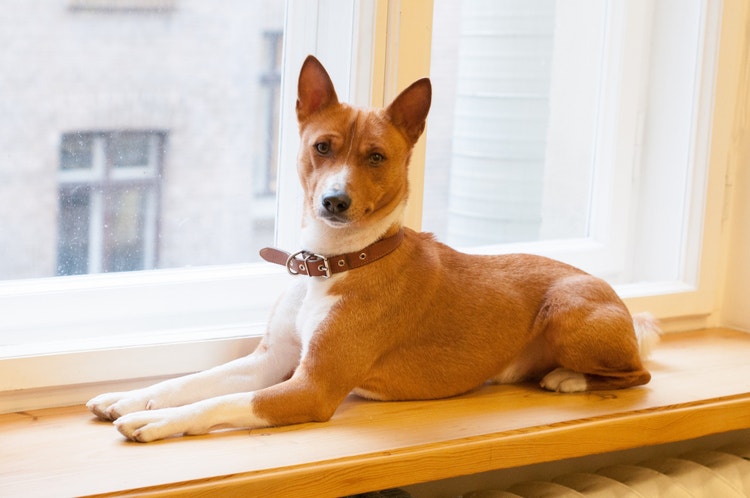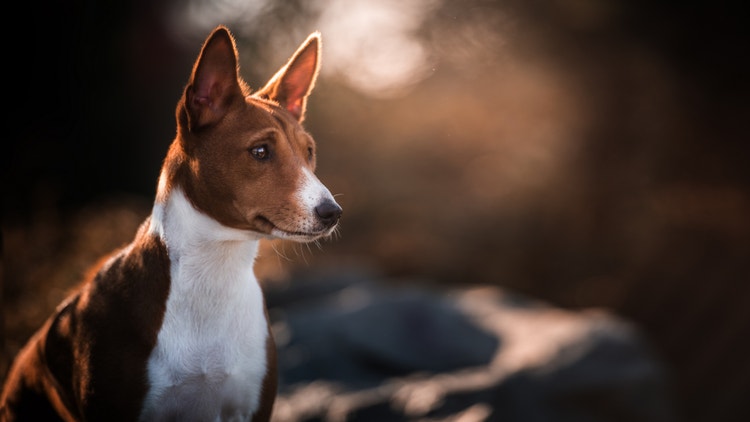

Basenji


Where Are Basenjis From?
The Basenji has been around as long as the Egyptian Pyramids, and their image has been captured by artists for over 4,000 years. The earliest Basenjis were gifted to the Pharaohs and the breed’s resourcefulness has sustained them over centuries. After the fall of Ancient Egypt, these sight- and scenthounds remained in central Africa as successful hunting dogs for tribesman, but were unknown to the rest of the world.
There is mention of a pair of Basenjis in England that were brought from the African bush by an explorer in 1895. They were called the African Bush Dog, but succumbed to distemper soon after their arrival. In 1937, a pair of Basenjis were brought to New York City by Mrs. Byron Rogers, whose only surviving male dog was successfully bred a few years later. Subsequently, the Basenji Club of America was founded in 1942, and the breed became registered in the AKC Stud Book in 1943. To sustain the breed in the States, American breeders ventured to Zaire in 1987 to import more Basenjis in hopes of widening the gene pool.
A Basenji received Best in Show at the Crufts international dog show in 2001.
Caring for a Basenji
What Kind of Diet Does a Basenji Need?
What Kind of Diet Does a Basenji Need?
These energetic little dogs need to stay trim to maintain their hunting ability, and require a diet built for their lifestyle and specific age group. Monitoring weight and caloric intake is also essential.
How Much Grooming Does a Basenji Need?
How Much Grooming Does a Basenji Need?
The Basenji requires very little grooming, but should be brushed weekly to maintain a shiny coat. They only require bathing if they get dirty playing or chasing things, and are certainly capable of self-grooming. Ear cleaning and nail trimming should be done as needed.
Are Basenjis Healthy Dogs?
Are Basenjis Healthy Dogs?
The Basenji breed has very few health concerns. They are predisposed to Fanconi syndrome, which is a form of kidney disease that can lead to organ failure. Frequent urine screenings are recommended to detect this syndrome in its early stages. Routine blood screenings can also detect electrolyte, vitamin, and mineral abnormalities or deficiencies caused by Fanconi syndrome. This condition can be life threatening, so early detection is key.
The Basenji is predisposed to: protein losing enteropathy, Fanconi syndrome, progressive retinal atrophy, cataracts, urolithiasis, and coloboma.
How Much Training Does a Basenji Need?
How Much Training Does a Basenji Need?
The Basenji breed is easy to house train, but hard to obedience train. They are independent and aloof, so they don’t always like obeying commands. Early obedience training and socialization are strongly recommended. Because of their short attention span, brief training sessions may yield better results. The Basenji likes a challenge, so coming up with creative games during a play session can help keep them engaged. They can become destructive if not properly exercised.
How Much Exercise Does a Basenji Need?
How Much Exercise Does a Basenji Need?
The Basenji is a high energy dog that requires a great deal of exercise. Playtime and long leash walks are essential to keep this breed out of trouble. They never tire and are easily bored, so coming up with new games will help keep them occupied. Since they are hunters by nature, it is recommended that they remain on a leash unless in a fenced-in area. Otherwise, they may be hard to catch if they find something to chase!
What Are the Physical Characteristics of a Basenji?
Basenji Facts
Other Breeds to Explore
References
- Morris, Desmond. Dogs: The Ultimate Dictionary of Over 1,000 Dog Breeds. Trafalgar Square, 2002.
- American Kennel Club. The Complete Dog Book. Random House Digital, Inc., 2006.
- Wilcox, Bonnie and Chris Walkowicz. The Atlas of Dog Breeds of the World. T.F.H Publications, Inc., 1995.
- Basenji Dog Breed Information. American Kennel Club, 2020.
- Update on Fanconi Syndrome and Cystinuria. World Small Animal Veterinary Association Congress, 2015.


